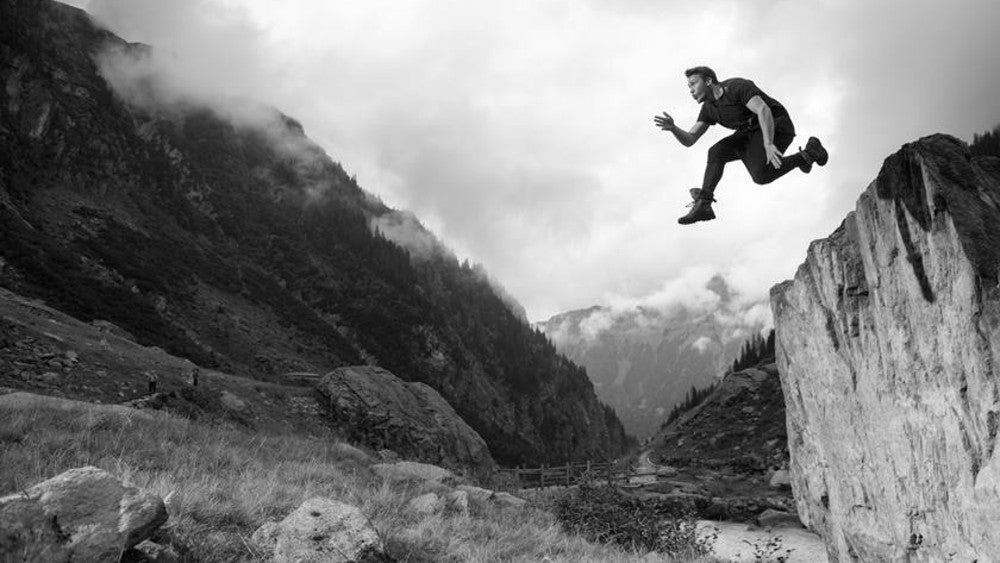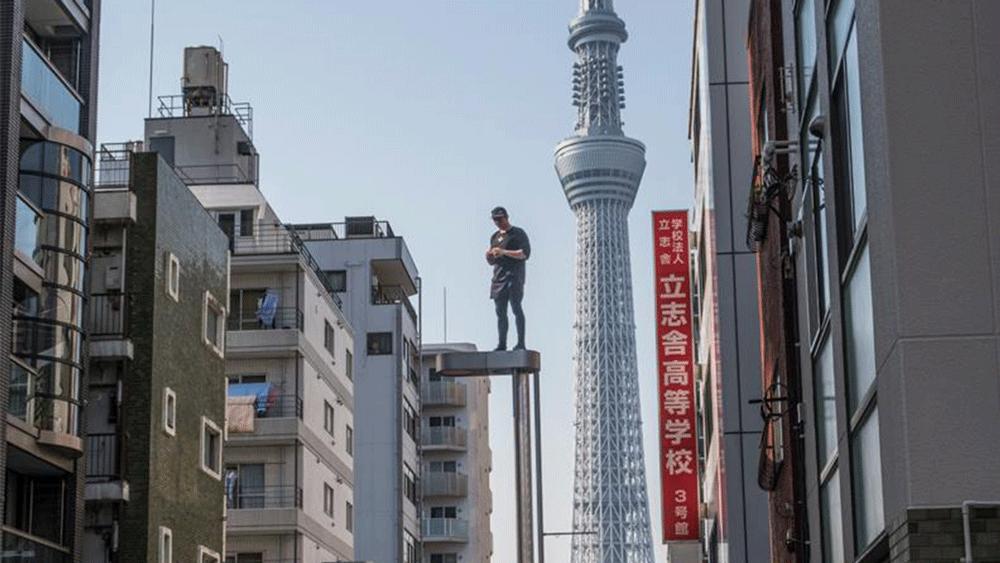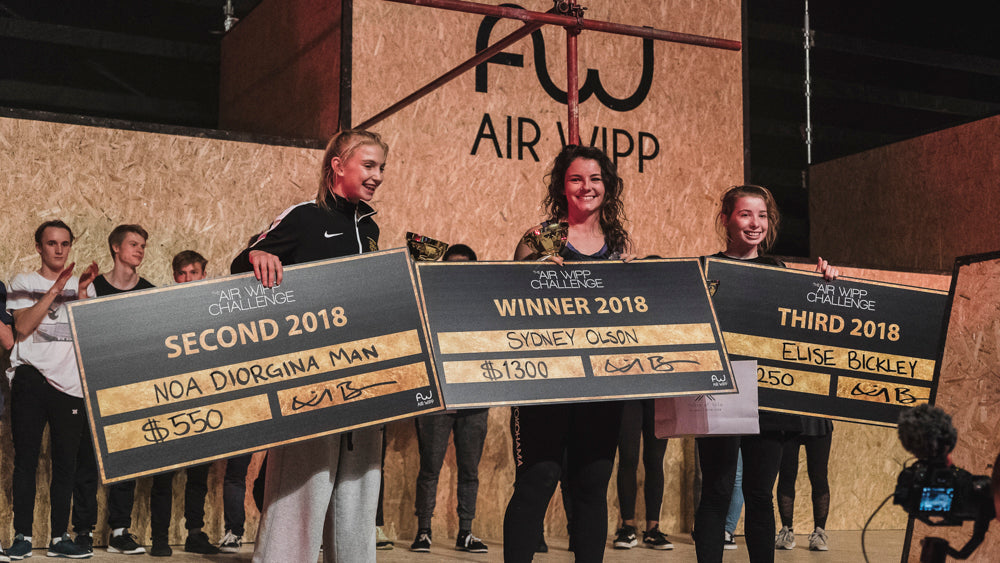The Natural Wonders of the Parkour World

I explore some of the different types of nature spots that are out there, give some recommendations of how you can use each of them to train, and tell you where you might find some of them in your own part of the world.
Although our sport is mostly associated with gritty urban cityscapes, there’s something incredibly refreshing about heading out into ‘nature’ to train every once in a while. It shouldn’t be surprising, as it was these settings that our ancestors honed all the primary upright movement we enjoy today over hundreds of thousands of years. Training outside of cities tasks you with thinking differently - your intuitions about all sorts of things, like how different surfaces will behave, are suddenly less useful. But far away from the endless distractions, you can discover a lot about yourself and your movement.
At first I was planning to list a load of specific locations that are known to be good for ‘nature training’, but then I realised that all the locations are more or less just versions of certain archetypes that can be found all over the world. So instead I’ll just list what I perceive these different archetypes to be, and then give some examples for each. That way hopefully you can use the list to find amazing locations that are potentially much closer to where you live!
River Valleys
So the first nature training archetype I very creatively called ‘River Valleys’ but it applies to basically any location whose topography has been formed by the effects of water. Basically when the snow at the top of mountains melts it obviously has to go somewhere; and gradually over millions of years the stream of meltwater carves its way through the very rock the mountain is made of. This sometimes creates some really interesting features that are beautiful canvases for exploring movement!

The best example I know of this location is the Valle Verzasca in southern Switzerland. Red Bull even held an Art of Motion here back in 2012 - which ended up being won by Pasha! Check out this video for that blast from the past. But of course examples of this sort of landscape can be found all over the world - you just need mountains tall enough to be snow capped in the winner, but get warm enough in the summer to melt away.

Above is the Nagatoro River, a few hours outside of Tokyo.
So what’s so great about training in places like this? I’d say what makes it so interesting is the texture of the surfaces, and the fact that nothing is ever quite level. Moving rapidly through a place like this forces you to rely on your visual sense data and proprioception a lot more, as it’s not as easy for your brain to predict what the next obstacle will be like. In my experience it’s easier to experience flow states because the environment stretches on for miles, allowing you to run for minutes at a time without abruptly changing direction or running out of obstacles. Plus there’s usually some fun cliff jumping spots around for afters!
Treescapes
Trees have so much to offer when it comes to parkour. I think for many of us trees form the basis for many of our adventurous pre-parkour memories; a link to our childhood in many ways. They taught many of us so much about natural problem solving, managing risk, and trusting our bodies. They’re such remarkable feats of nature. Needless to say they can be found almost anywhere, but some are much better than others for training.

‘Bustree’ as it’s known, is located in Cambridge. It’s one of the most remarkable trees in the whole of the UK, and has been a training staple of the Cambridge community for as long as I can remember. The limbs sway when landed on, so your balance has to be so on point. The consequences for not getting it quite right are pretty severe too! Massive shout out to Ampisound for the image.

Another really cool tree location is Chatsworth Park in the San Fernando Valley of California. There’s several trees like this one all linked together, and the ground is rather soft so you’re not so worried about taking a drop. This location represents more of what you’re more likely to find around the world; from the forests of central Europe, to the vined giants of the tropics - think places like Brazil (check out this classic moment), Malaysia, and even Florida.
Tree’s offer a lot in the way of organic feeling vaults, climbing situations, and of course precisions. But what really sets trees apart from other ‘nature’ training is the chance to explore lashés a lot more thoroughly. In cities you’re dealing with bars of specific diameters, as per regulations and requirements... and while there is variation in that, it’s nothing like the variety found in trees. It’s really fun to explore all the different angles and possibilities that trees offer, and I’d argue that it improves your game massively.
Rocky Formations
This one is all about those incredible rock formations carved out by forces other than water; be that literally millions of years of wind in some cases, or even billions of years of tectonic movements. They are the world's biggest adventure playgrounds, and can simultaneously make you feel incredibly small, and make you feel infinitely big when you conquer them.

My absolute favourite example of this kind of nature training location is Joshua Tree National Park in California. Miles and miles of incredible rocky outcrops and boulder piles. It’s such an alien setting when you first lay your eyes upon it, with its demented looking trees. Choose any peak, and attempt to make it to the summit… along the way I guarantee you’ll find yourself in interesting parkour situations that really test the mind, and force you to think a little outside of the box.

Some other amazing ‘rocky formation’ style locations include Cappadocia in Turkey, Garden of the Gods in Colorado Springs - USA, the Giant’s Causeway in Northern Ireland, and the Masada section of the Judaean Desert in Israel. But they can be found all over the world; look on the map for the edges of deserts, as that’s where a large proportion of them can be found. (Check out Storror's Masada video here).
The best thing about training in places like these are the rapid ascents and descents. The rocks are usually really grippy, so you can explore some really gnarly wall runs - often over the possibility of hefty consequences. They’re often really dense with options - every direction is a new adventure. It’s also amazing mentality training, because you’re often a long way from help should anything go wrong - you’re forced to be sure of your actions, which makes you understand yourself more. You often come back to the city on another mental level!
Mountains
Then of course there are your classic mountains (and volcanoes!). Often teeming with structures a lot like those rocky outcrops described above - just spread over more elevations. The drawback is that it can be a bit harder to get to them; not many people are up for a massive hike to a spot. But that’s not really the spirit of training out in the wild - it’s all about the adventure. A trip to most mountains in the world will yield some incredible experiences and training opportunities for the hardy enough.

When I was in Rocky Mountain National Park at the beginning of last year, some of the APEX Denver guys and I decided to make a day of hiking to the summit of this one particular peak. Along the way we encountered row upon row of felled trees which we were able to drill stride missions on. And later on there was some awesome free-soloing moments. Not to mention the insane view at the end. Mountain missions are definitely underrated!
And the best thing is they can be found in almost every part of the world - save maybe the South Pacific (unlucky for you if you live there, right?). I can think of loads of particularly cool adventures people have had training on mountains all over the world; from Tim Shieff bombing it down the trails of Cotopaxi in Ecuador, to Joel Eggimann vlogging his exploration of the Bunya Mountains near Brisbane, Australia.
There are so many cool mountains out there that you could integrate into your parkour city trips too as an excursion. You’ve got Table Mountain that overlooks Cape Town in South Africa. Take a trip to Seoul in South Korea, or Hong Kong and you’ve got mountains in every direction, and if you go to Hawaii - then you’re on a massive volcano! So jump onto Google Earth and get inspired.
- - - - -
A parkour freerunning trip out into the wilderness for a weekend or so can be the ultimate reset - for when the same old spots are feeling stagnant, or your thinking seems to have plateaued. It’s like moving from the digital world to the analogue world; not so many right angles and predictable architecture, just whatever the laws of physics moulded before our time on the earth, and whatever consequence for failure comes with it. There’s no rules out in nature apart from that.
Be safe out there!



